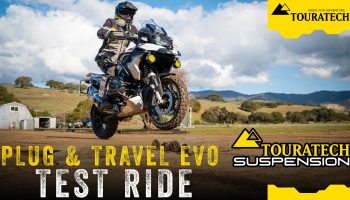By Ron Lieback
Most new adventure riders make the same mistakes—we surely did. Here are the top 8, and more importantly, how to avoid them.
Inevitably, we’ll all experience the growing pains of learning how to adventure ride properly. Falls will happen, bikes will get banged up, and egos will get bruised. But the important thing is to learn from these mistakes and put those lessons in your bag of tricks for the future.
Luckily, plenty of other ADV riders have made enough mistakes before you, allowing us to put together a list of eight mistakes many new riders make. We’ll tell you what they are and, more importantly, guide you on how to avoid them.
Ready for a lesson? Sit down (we’ll save the standing for the dirt), class is in session.
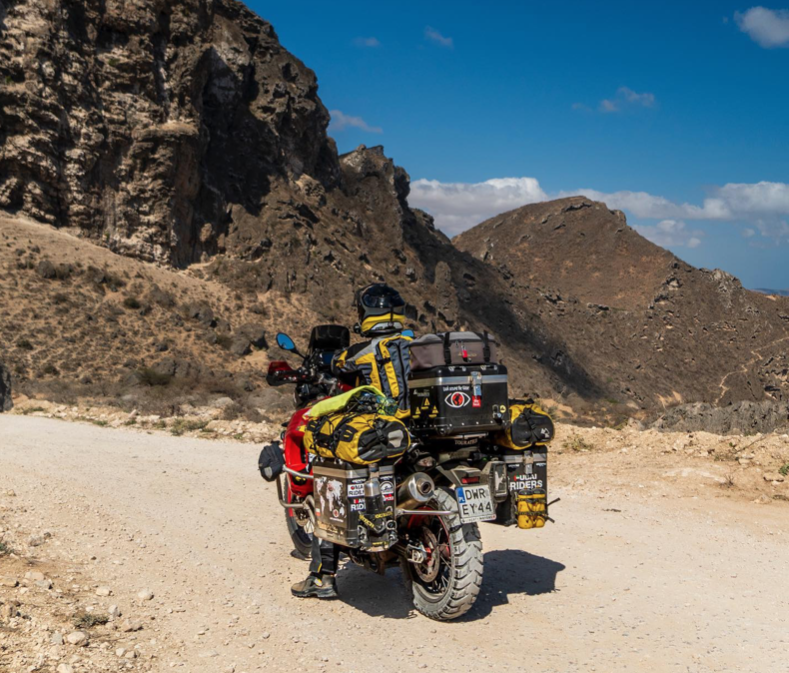
1. Packing Too Much
The first mistake happens before you even ride the motorcycle. When traveling, we have a habit of packing all the comforts from home .On a motorcycle, you’ll quickly learn how limited your available space is, which means you have to be ruthlessly economical with what comes with you and what stays home. Not to mention, all that stuff just weighs down your bike!
When we talk about the essentials, we’re talking about appropriate clothing, a tool kit (including a tire repair kit), a first aid kit, camping equipment, food (or something to prepare food), and drinking water.
I also tend to intermittently fast while riding longer distances, so I keep a quick hydration pack with me (a favorite is one brand that provides powder packs loaded with sodium, magnesium, and potassium). I’ve overpacked many times in the past, especially regarding clothing and camera equipment. Even on a weekend trip, I’d have to take not just my Zega Pro pannier setup and top case, but also a dry bag. Nowadays, I pack as minimal as possible and typically never need even a top case. The iPhones are capable of images and videos, and I don’t overpack socks and t-shirts as I once did.

2. Tensing Up
One of the most common mistakes new riders make is getting too tense. When you’re rigid in the seat and holding the bars as tightly as you can, the motorcycle won’t work as it should.
Not to mention being tense will wear you out fast. It’s understandable; riding adventure bikes can be intimidating if you’re new at this, but trust that staying loose and letting the motorcycle do the work for you is better for both you and the bike.
Again, it’s a natural situation to get tensed up and squeeze the handgrips to hard. Practice loosening up your grip. When I feel myself tensing up, I say out loud to myself, “let the suspension work, dummy.” Your bike will also handle obstacles and direction changes optimally when the suspension is working as intended—not just translating all movement through your tense body.
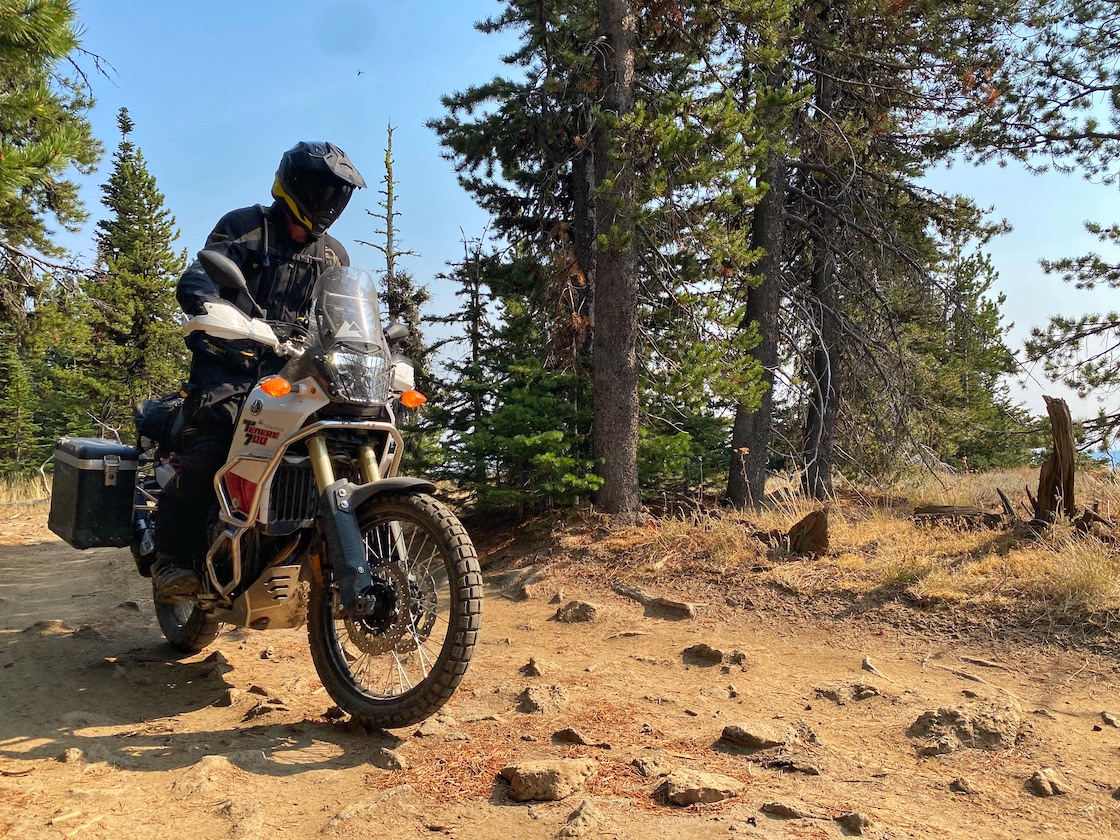
3. Looking Straight Down
Another rookie mistake, especially in the dirt, is looking directly in front of you as if you’re trying to track where the front tire is going. This means the world is coming at you quickly, causing your brain to have to process your surroundings and where you’re headed extremely fast. If you need to avoid something ahead of you, by the time your brain processes it, it’s too late. There’s simply not enough time to react.
Instead, look up and scan ahead. Knowing what’s in front of you allows your brain to process your surroundings at a much slower pace. And if you do see something up ahead you need to avoid, there’s plenty of time to change direction or react appropriately. Your periphery will keep track of what’s immediately in front of you, but if you’re scanning far ahead, chances are you won’t get spooked by any surprises.
Looking ahead is still one of my biggest challenges and something I train at weekly while behind the house on some single track or out for spirited street rides and during the multiple training courses (both off-road on road racing courses) I complete yearly.
During a recent two-day adventure riding camp at the BMW U.S. Rider Academy in Greer, South Carolina, I had one demanding goal—not to drop the R 1250 GS while pushing it as hard (and focused) as possible. I nearly made it until I dropped it during a mockup sand race.
I made it to the finals and wanted to win, but allowed my nervousness and focus on looking straight down at the tire in some of the deepest sand I have ever ridden through—a huge no-no for not crashing. The second-place finish wasn’t a bother, nor was the dropped bike. It was the fact that I reverted to a bad habit of looking straight down, something I’ve been working on reverting for decades.
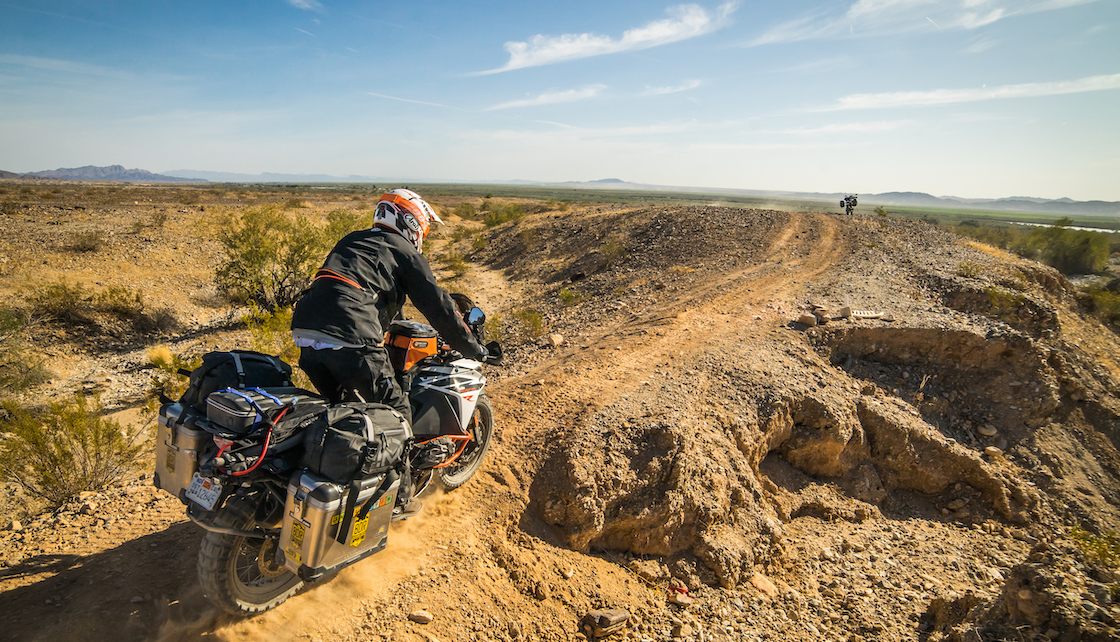
4. Sitting When You Should Be Standing
Especially if you come from a street background, sitting on an adventure bike will seem like second nature. However, sitting is really only for smooth sections or paved roads. Off-road, standing is where you want to be. It puts the weight onto the pegs and makes it easier (and more effective) to put any inputs into the bike if you need to. When you do sit down, be sure to sit close to the tank with your elbows bent.
This lets your arms act as mini shock absorbers if you hit a bump but also allows your hands and arms to be ready if you need to make an input on the bars. When riding off-road, I spend likey 90 percent of my time standing, only sitting on smoother gravel roads to conserve energy. The goal is to stand for ultimate control of your adventure bike but do so while conserving the most amount of energy and not getting cramps in your legs.
To help, add some leg presses into your workout regime, practice breathing techniques to keep your pulse rate down, and allow your knees to press in the tank on longer straights with no obstacles to allow your body to rest in between the more challenging stuff.

5. Deflating Tires
It’s common practice to air out your tires on dirt bikes or trial bikes, but for the most part, an adventure bike is simply too big and heavy to do that. Letting air out of the tires could get you out of sand or mud, but if you do need to do that, air them back up to proper pressures after you get out.Keeping little air in the tire could cause the bike to roll slightly on the rim, damaging it. If you’re running tubes, you could also get a pinch flat, or worse yet, roll the tire off the rim.
All bad things.
Too much air will make your grip issues worse. You can bounce off rocks and objects instead of tracking where you want to go, which can cause crashes. Basically, your handling greatly depends on proper tire pressure.
I ride at the bike’s recommended pressure for longer street portions. But if the day calls for mostly off-road with some street in between, I tend to run somewhere around 30-32 aboard my main adventure bike, a KTM 1190 Adventure R typically donning 50/50 tires. This may seem like a high psi for many riders, but your riding technique can off-set some of the loss in grip. And I haven’t tacoed a rim in about eight years since I began practicing with higher off-road pressures.
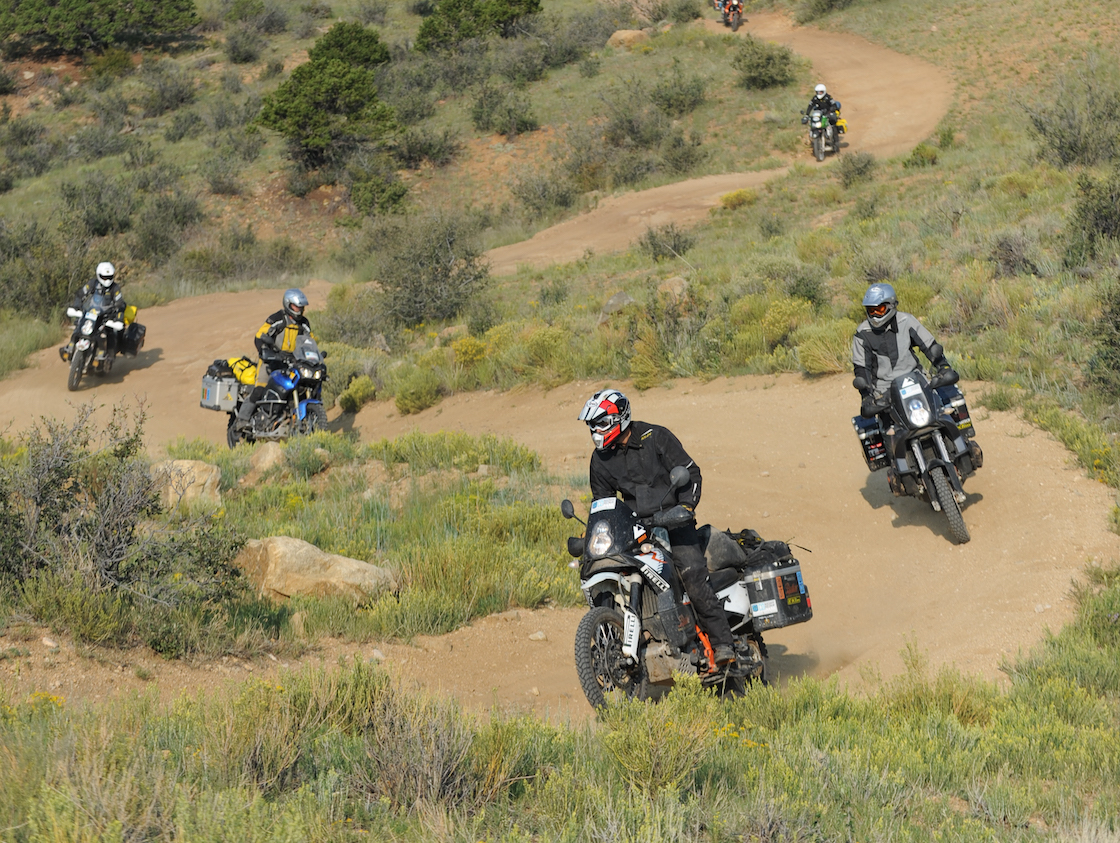
6. Only Using Rear Brake
A common bit of advice a new rider might hear is to stay off the front brake because it can lock easily and dump you on the ground. Well, if you can’t use the front brake, then your only option is the rear brake. But what do you do if you have to stop quickly? The rear simply won’t be enough by itself.
Using the front brake is absolutely necessary. It just needs to be used with care since, yes, it could lock and lead to a crash. If your bike has ABS, then locking isn’t an issue. But be careful; if the ABS is tuned for the street, then you might get very little actual braking because the system is trying to prevent the front from locking.
Some bikes let you turn off ABS entirely, others only turn off the rear, and others still are always on. Still, yes, the front brake is necessary if you want to stop quickly. Take any ADV school, from the MSF course’s new adventure riding course to the BMW U.S. Rider Academy adventure school, and you’ll experience just how amazing.
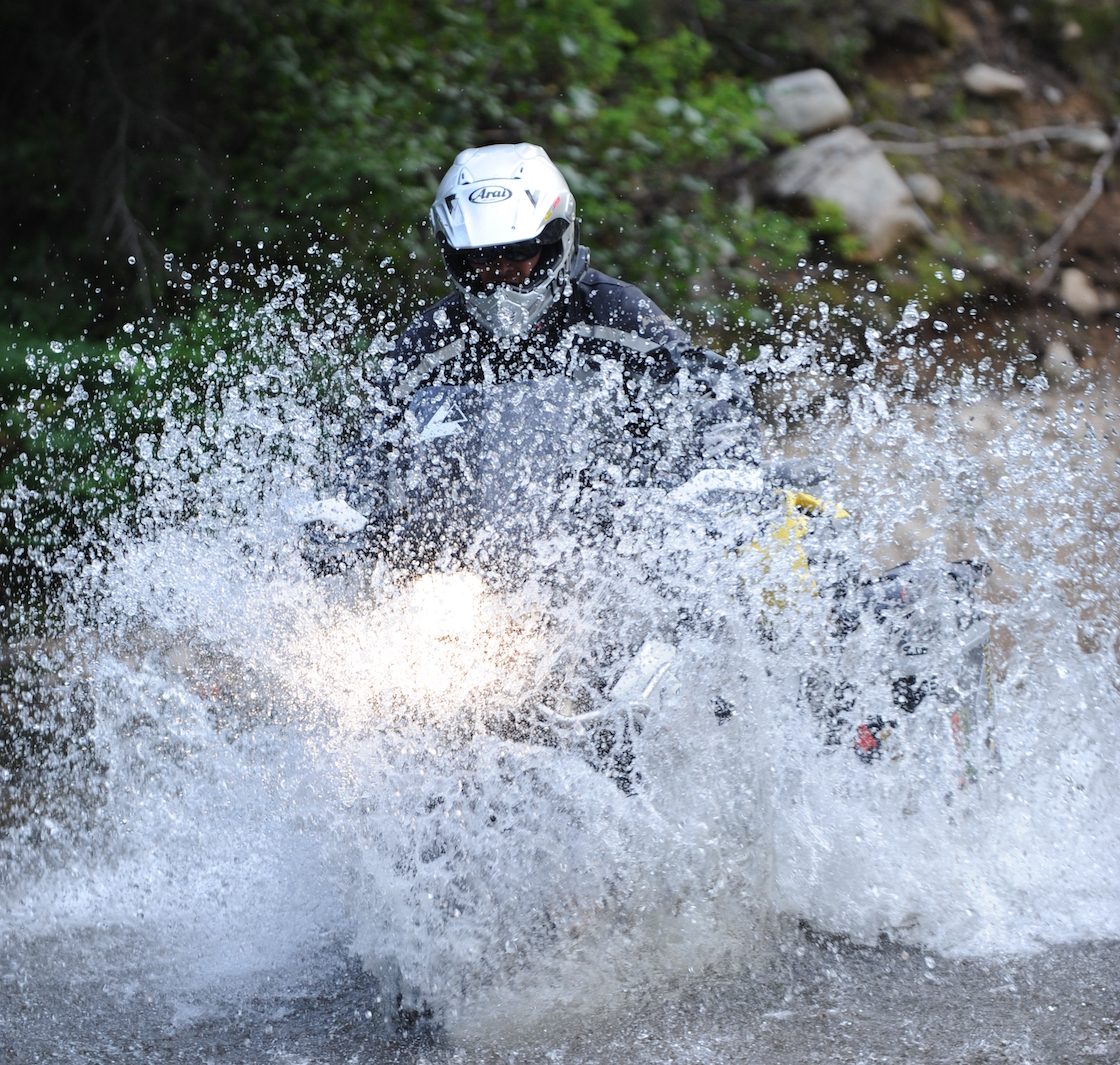
7. Not Studying Terrain
Again, another easy rookie mistake. Understanding the earth underneath your tires seems easy to understand, but we often get lulled into thinking one section will be the same as the next because they look similar. This isn’t always the case. And when it’s not, the results can be dramatic. This also applies to weather patterns. If extreme rain comes down, making a path unrideable, do you have an alternate route (or two) to take instead?
This is also essential for creek crossing—especially the larger ones. We recommend walking through or using a stick to measure just how deep sections are or if there are huge, slippery rocks in the way.
This happened to me a few times while riding in unfamiliar territory. One time a small crossing appeared simple and shallow, and the next thing I know, my bike was submerged in water due to just how deep the creek was. A quick few seconds of the bike checking depth would have saved me a few hours of waiting for my bike’s intake to air out so I could ride.
With that said, always keep your clutch covered just in case the engine goes underwater. The goal is to pull that clutch in and keep the throttle twisted – if submerged minimally, you’ll be spitting air out instead of sucking water in, helping you diverge a huge issue.
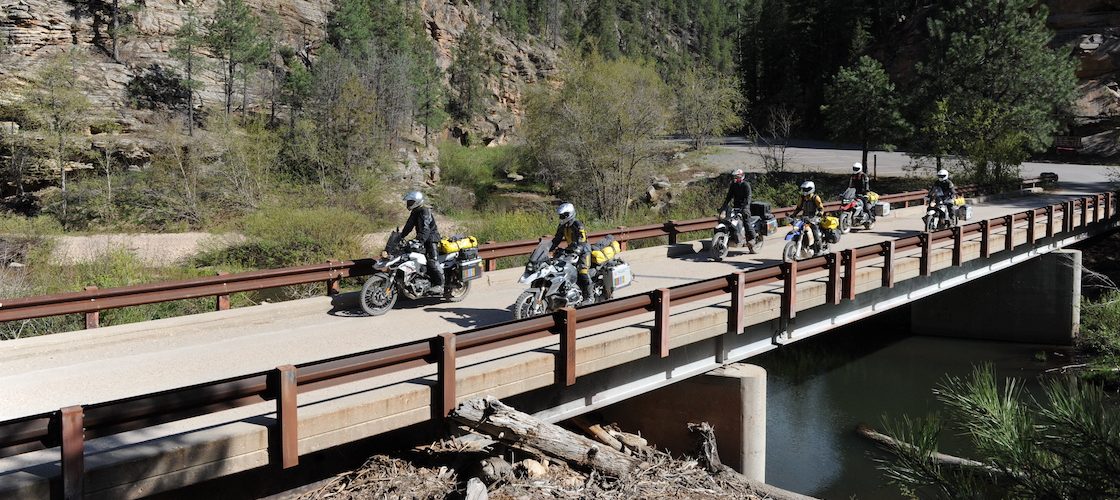
8. Riding With the Wrong People (or Alone!)
Your support group is everything, especially on a long ride. Sharing a ride with a group of friends will create memories that will last a lifetime. But if you choose the wrong friends, you might come up with lifelong memories nobody wants to have. A good group of friends will support, help, and guide you along the way. Especially if that means warning you that something might be over your skill level. A bad group of friends might let their testosterone get the better of them and goad you into a situation you’re not ready for, with obvious consequences.
The lesson here is simple: choose good riding partners.
And try never to ride alone, especially when you’re deep into the backcountry or on a longer trip. I tended to do this often when I first began riding and even was forced to camp out on a trail near Michaux State Forest because I blew out a rim and couldn’t fix a tire.
I was having too much fun and washed out the front on a faster stretch, causing me to plummet over some rocks. And since my PSI was lower, I destroyed my rims, which sidelined me in the dark. Thankfully I had a few beverages to keep me sane—there was zero phone signal or people around until the next day when I got some help.
These are some of the most common mistakes—but we’re sure you have many, many more. Remember these, and practice as often as possible to be the safest rider possible. And safer means more miles and more enjoyment—something we can all use a bit more of these days.
